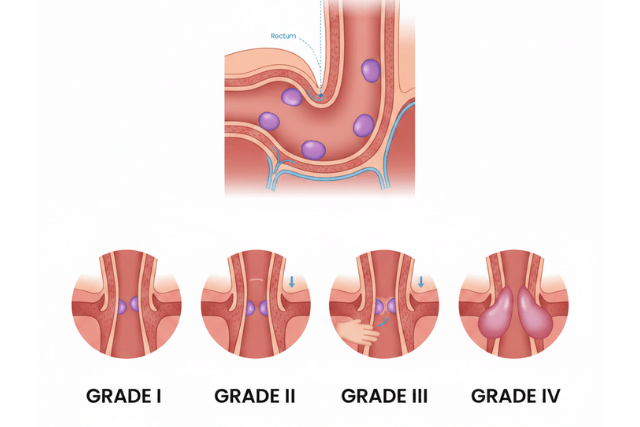Is a fistula forming? If you’ve been noticing unusual symptoms around your anal or vaginal area, it’s important to address them early. A fistula is an abnormal connection between two body parts, often caused by infection or injury. Recognizing the early signs of a fistula is essential to prevent complications. In this blog, we’ll explore how to identify when a fistula is forming, the symptoms to watch for, and effective treatments such as FiLaC® (Fistula-tract Laser Closure) for healing.
What Is a Fistula?
Before we discuss the signs of a fistula, it’s essential to understand what it is. A fistula is an abnormal tunnel or connection between two body parts. It forms when tissue becomes inflamed, often due to an infection. The connection can occur between different organs or between the skin and an internal organ.
For example, an anal fistula happens when an abscess in the anus forms a tunnel to the skin around the anus. This tunnel, or fistula, can cause pain and discomfort. Early detection is crucial to avoid more severe problems like infection or chronic pain. Now, you might be asking, is a fistula forming? There are several signs and symptoms to watch out for that can indicate a fistula is beginning to develop.
Types of Fistulas
Fistulas can develop in different areas of the body. Knowing where they form will help you identify the signs and symptoms to watch for.
1. Anal Fistula
An anal fistula is one of the most common types. It forms when an abscess near the anus creates a tunnel to the skin’s surface. If left untreated, this condition can cause significant discomfort, leading to complications. Being aware of the symptoms of anal fistulas is important for early treatment.
2. Vaginal Fistula
A vaginal fistula connects the vagina to another organ, such as the bladder or rectum. This often occurs after childbirth, pelvic surgery, or radiation therapy. Vaginal fistulas can cause incontinence or leakage, leading to discomfort and embarrassment.
3. Urinary Fistula
Urinary fistulas form when there’s an abnormal connection between the bladder and another organ. These fistulas often result from surgery or injuries. Urinary fistulas can lead to continuous leakage of urine, and in severe cases, infections like urinary tract infections (UTIs) can develop.
4. Gastrointestinal Fistula
Gastrointestinal fistulas connect different parts of the digestive system. They can develop when tissue becomes damaged or after surgery. These fistulas can lead to serious complications like infection, malnutrition, and digestive issues.
Is a Fistula Forming? Early Signs to Watch For
If you’re concerned, is a fistula forming? It’s important to know the common signs. Early detection is crucial for preventing complications. The symptoms can vary depending on the location of the fistula, but here are some general signs to look out for:
1. Pain or Tenderness
Pain around the affected area is one of the most common symptoms. In cases of anal fistulas, this pain may feel sharp or throbbing. It can also increase when sitting, moving, or after bowel movements. Additionally, tenderness around the skin is a good indicator that something might be wrong.
2. Persistent Discharge
Discharge is often one of the first signs that a fistula is forming. This discharge can be watery, pus-like, or even blood-tinged. In anal fistulas, you may notice drainage near the anus, which can be constant or occur after bowel movements. If you notice persistent discharge, it’s important to consult a healthcare provider.
3. Redness or Swelling
Redness and swelling around the affected area are common when a fistula is developing. This is due to inflammation caused by the infection or abscess that typically leads to the fistula. Swelling can make the area feel tender and uncomfortable.
4. Itching or Irritation
Itching around the affected area can also be a sign of a fistula. The irritation may be caused by the body’s inflammatory response to the infection. Although it might seem like a minor issue, persistent itching should not be ignored.
5. Fever and Malaise
In some cases, a developing fistula might be accompanied by fever, chills, or general fatigue. These symptoms suggest the presence of an infection. If you experience any of these symptoms alongside other signs of a fistula, it’s important to seek medical help immediately.
6. Difficulty with Bowel Movements (Anal Fistula)
If you have difficulty passing stools or experience pain while doing so, it could be an indicator that an anal fistula is forming. You might also feel a sensation of pressure or a small lump near the anus. These symptoms, when combined with other signs like discharge, should prompt a medical consultation.
How to Diagnose a Fistula
If you suspect a fistula is forming, getting a proper diagnosis is essential. To confirm whether you have a fistula, doctors will conduct a thorough evaluation.
1. Physical Examination
A healthcare provider will examine the affected area. For anal fistulas, this involves inspecting the anal area for visible openings. The doctor may gently probe the area to check for any abnormal connections. In the case of vaginal or urinary fistulas, the doctor will assess the symptoms and may perform a pelvic exam.
2. Imaging Tests
Imaging tests such as an MRI, ultrasound, or CT scan are often used to determine the exact location and size of the fistula. These tests provide a clear picture of the fistula’s structure and help the doctor decide on the best treatment method. In some cases, a fistulogram (a special X-ray test) may be performed.
Treatment Options for Fistulas
If you’re wondering, is a fistula forming? You may also be asking about the treatment options available. There are several treatments for fistulas, and the choice depends on the severity and location of the fistula. Let’s take a closer look at some common treatment options.
1. FiLaC®: Fistula-tract Laser Closure
FiLaC® is a cutting-edge treatment for fistulas. It uses laser technology to close off the fistula tract. This procedure is minimally invasive, meaning it requires only small incisions and causes less pain compared to traditional surgery. The benefits of FiLaC® include:
- Minimal pain: Since it’s minimally invasive, the pain is significantly reduced.
- Quick recovery: Recovery time is faster than traditional surgical methods.
- High success rate: FiLaC® is particularly effective for anal fistulas, providing long-lasting results with a lower recurrence rate.
For people with complex or recurrent fistulas, FiLaC® offers a promising solution. It allows patients to recover faster and return to their normal activities more quickly.
2. Fistulotomy
Fistulotomy is a traditional surgical procedure used to treat simple anal fistulas. The surgeon cuts along the length of the fistula to allow it to heal from the inside out. While effective, this method can cause more pain and a longer recovery time than newer treatments like FiLaC®.
3. Seton Placement
A seton is a piece of thread or rubber that is placed in the fistula tract. This keeps the fistula open and helps it drain over time. It’s often used for more complicated fistulas, especially those that involve the sphincter muscle. After several months, the seton may be removed, and the fistula may heal on its own.
4. Advancement Flap Surgery
For complex fistulas, advancement flap surgery may be recommended. In this procedure, healthy tissue is used to cover the fistula opening. This type of surgery requires a longer recovery time and is usually reserved for high-risk cases.
5. Medical Management
In some cases, antibiotics and anti-inflammatory medications are used to manage the symptoms of a fistula. These treatments can help reduce inflammation and treat any infections present. However, they are often not enough to heal the fistula completely, and surgery may still be required.
Preventing Fistulas
While it’s not always possible to prevent a fistula, there are several steps you can take to reduce the risk:
- Maintain good hygiene: Keeping the affected area clean can help prevent infections that lead to fistulas.
- Treat infections early: Addressing abscesses or infections quickly can help prevent fistula formation.
- Eat a healthy diet: A high-fiber diet can prevent constipation, reducing the risk of anal fistulas.
- Avoid straining: Avoid excessive straining during bowel movements to prevent injury to the anal area.
Conclusion
Is a fistula forming? If you notice symptoms such as pain, discharge, swelling, or irritation, it may be time to seek medical advice. Fistulas can be painful and lead to complications if left untreated. However, with early diagnosis and treatment options like FiLaC® (Fistula-tract Laser Closure), you can achieve relief and prevent further issues. If you suspect you have a fistula, contact your healthcare provider for evaluation and treatment.



